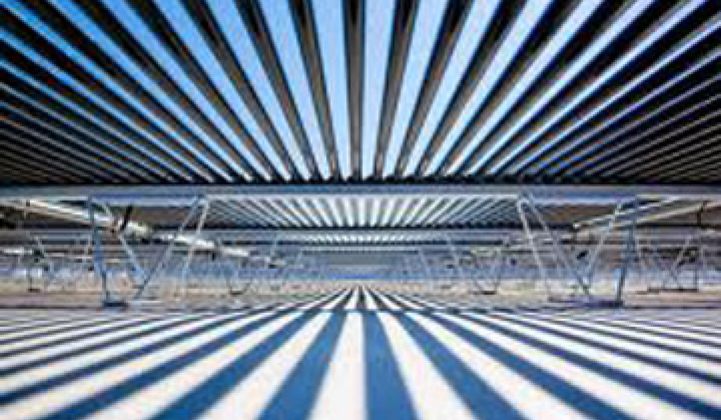Lately, we've been asking people a question:
Will Solyndra, the controversial maker of cylindrical solar cells, start discussing its many challenges and financial problems before the election or after?
If the company couldn't hold out until November 2, some believed it could be an embarrassment for the Obama Adminstration, which has given the company $535 million in loan guarantees. (Private investors have plunked in over $1 billion.) The setback, combined with the prevailing mood in the country, could have tipped votes against clean energy, some feared. An immense, idle factory with a "Brought to you by the ARRA" seal of approval doesn't make for great advertising.
The money would have been better used to expand the freeway near Fremont, one competitor noted.
Solydra held out, barely. The company fed the information of its woes to the New York Times under what was likely an embargo until late on election night. The company then began sending out notices to other news outlets after the Times ran its piece.
In a nutshell, Solyndra will shut its first factory and scale back its production goal from 610 megawatts in 2013 to 300 megawatts in 2013. Declining prices in solar panels -- spurred by cheaper silicon, cheaper products from competing Chinese manufacturers, and other factors -- were cited as the culprits.
Solyndra's problems have been well documented by my colleague Eric Wesoff and others on this site. (See these 2008 stories for more background.)The company makes an unusual solar cell that costs far more than traditional crystalline solar cells. Solyndra's average sale price is around $3.24 a watt and the company has been selling panels at a loss. Crystalline silicon solar panels sell for $1.95 or less a watt and companies can sell them for a profit. Although Solyndra can argue that its modules are cheaper to install, the modules only makes sense economically in a few corner-case scenarios. A private letter ruling from the IRS says that building owners can deduct the cost of a new roof in some circumstances when putting in a Solyndra system, but it only applies in some cases. Performance reviews weren't promising.
During the summer, it cancelled an IPO and then the company swapped out CEO and founder Chris Gronet with Brian Harrison, the former CEO of Numonyx, a memory company that recently got sold to Micron after a series of delays.
Why has Solyndra done so well in fundraising? Some of it has to do with circumstances. Solyndra actually applied for DOE loans back in 2006, when Bush was still President. When Obama announced that he wanted to rev the energy economy, Solyndra happened to be first in line. Investors were also intrigued by the novel tubular module. A tube, potentially, can harvest sun for more hours each day. The design, at a minimum, gave them some assurance that they weren't investing in a me-too panel. But, at each juncture, instead of pulling out and pulling the plug, investors doubled down.
What happens next? We know what the solar industry thinks. Solyndra will collapse is the general opinion. But it still has a single factory. In some long-shot scenario, something good could, maybe, one day, come out of this.



